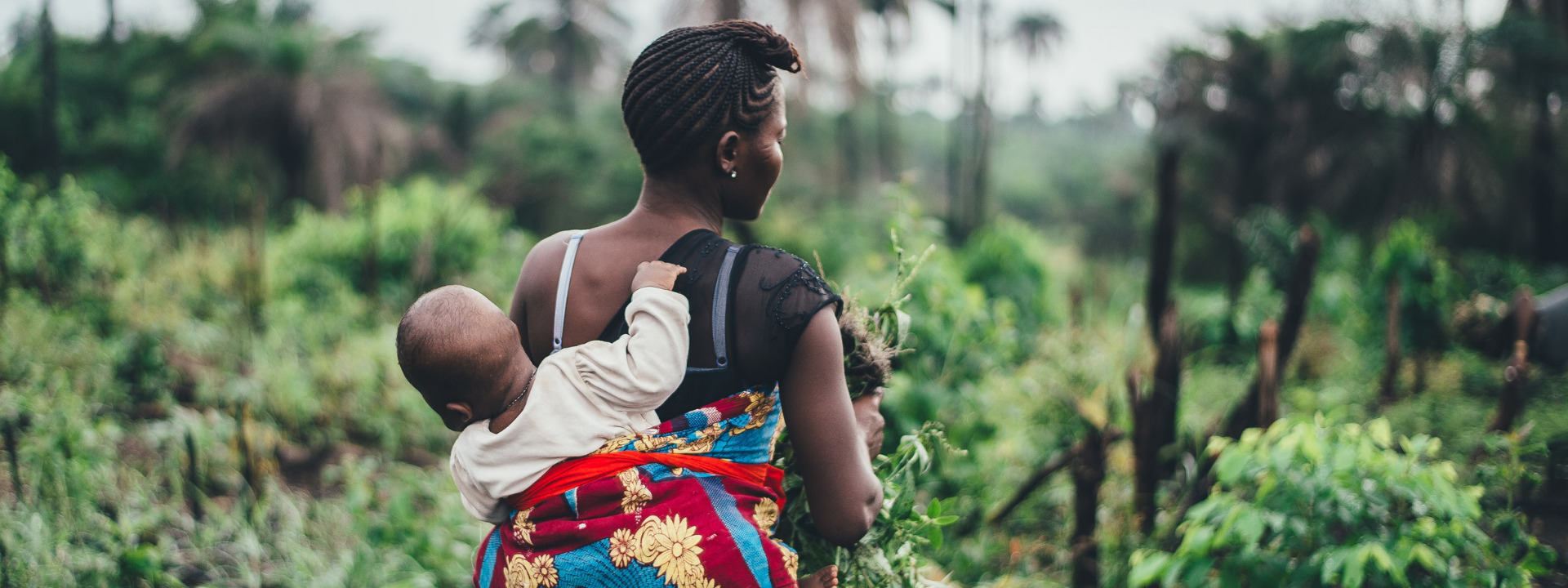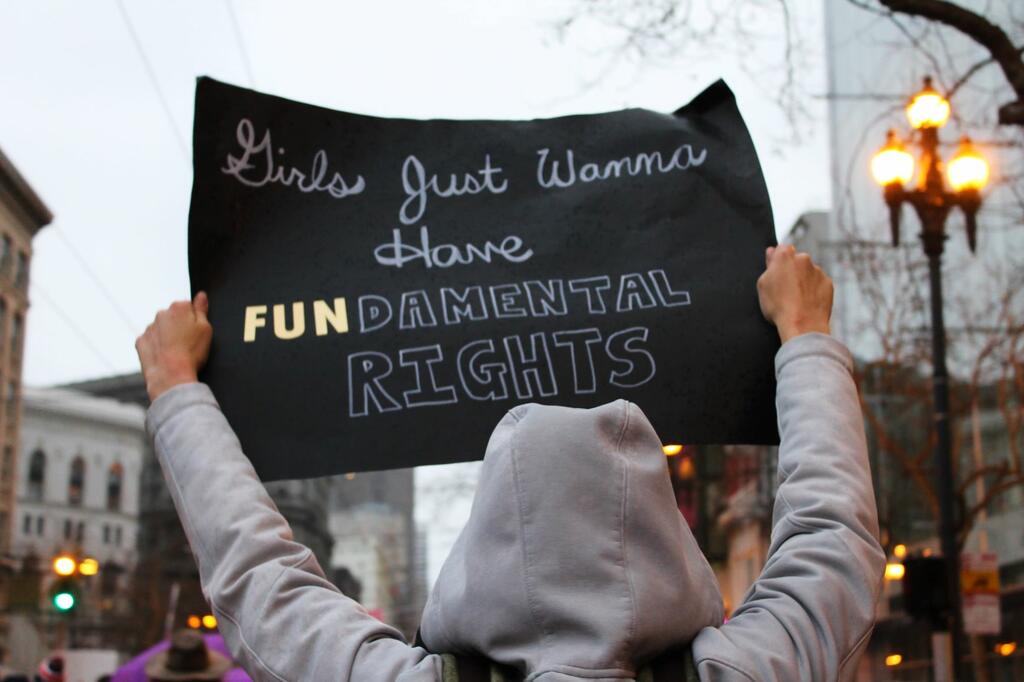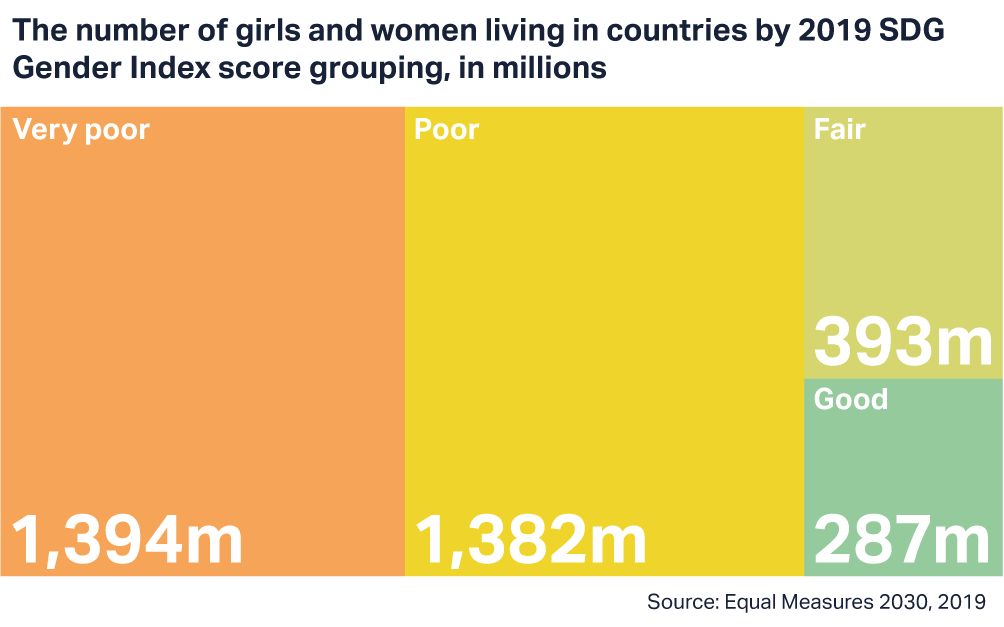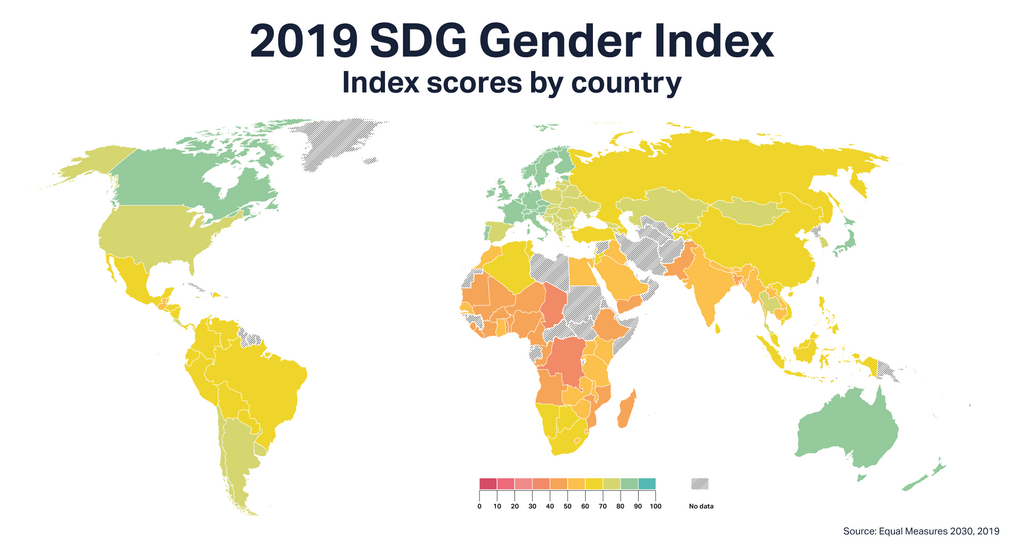
Four out of five women live in countries rated ‘poor’ or ‘very poor’ for gender equality
A major new report on the state of gender equality in 129 countries reveals that women and girls continue to be discriminated against across the globe, with four out of five women living in the lowest scoring countries.

The report, Harnessing the power of data for gender equality, published by Equal Measures 2030, introduces the ‘SDG Gender Index’, a new comprehensive tool for tracking progress towards gender equality using 14 of the UN’s 17 Sustainable Development Goals (SDGs).
No country is equal
According to the index, no country has yet achieved gender equality as envisioned in the ambitious 2030 SDG Agenda. The average global score, where 100 is full equality, is only 65.7. Forty percent (or 1.4 billion) of the world’s girls and women live in countries with “very poor” scores of 59 or less and another 40% live in countries with “poor” scores of 60-69. This means only one in five women lives in a country that has at least a “fair” gender equity score.
Not a single country received an “excellent” score (90 or more) but as usual, Scandinavia topped the list of “good” countries, with the highest mark going to Denmark (89.3). The other countries in the top ten in order of rank are Finland, Sweden, Norway, Netherlands, Slovenia, Germany, Canada, Ireland, and Australia.

Economic growth does not always reflect progress
Whilst rich countries were more likely to have higher scores, several developing countries performed a lot better in some areas than expected based on their GDP. For example, Rwanda has the fifth-highest score globally for women’s physical safety and has even surpassed parity in parliament.
Another outlier was the United States – despite having the strongest economy in the world, it ranked only 28th out of all countries, in large part due to poor performance on gender indicators related to poverty, employment, and healthcare. In contrast to Rwanda, currently, less than a quarter of US Congress members are women.

The most neglected SDG
Worryingly, the report found that the indicators under SDG 5, the standalone gender equality goal, are among those the world is most behind on.
Almost all of the ten lowest-ranking countries (with the exception of Yemen) are in Africa, where fertility rates remain very high. Greater investment in the advancement of women’s rights in developing countries is key to decreasing poverty, suffering and environmental degradation. The authors point out that even the highest-scoring countries have a lot more work to do, particularly on issues such as equal representation in leadership positions, gender pay gaps, and gender-based violence.
We cannot solve our biggest social and environmental issues unless world leaders ramp up efforts to give women and girls equal rights, freedoms and choices.
